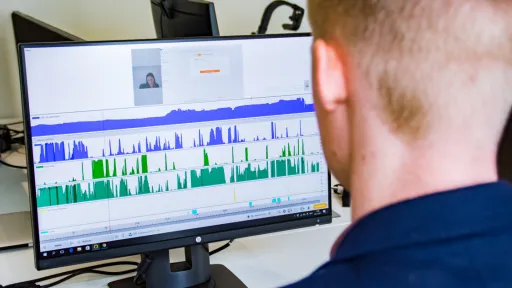If you have a website, you naturally want the number of visitors to increase and for them to actually take actions on your site. Therefore, it is important to make your website as user-friendly as possible. And how better to do that than by listening to the people who actually use your site? That's where qualitative research and the Voice of the Customer (VOC) come into play.
Regular research methods such as web analytics and heatmap tools are already frequently used to measure and analyze visitor behavior. However, they miss an important part of user behavior. By investigating what visitors see and think while using a website or app, we only uncover what they do (behavior such as clicking a button). But more importantly, why they do something; the motivation behind the behavior, why does a visitor click a button, or why not?
What is Qualitative Research?
Qualitative research is a research technique aimed at gaining insightful understanding of the opinions, attitudes, values, and behaviors of a specific group of people. This type of research focuses on the quality of information and is conducted through interviews, focus groups, or in-depth interviews. Qualitative research is useful because it provides insight into how people think and feel about your website and how you can improve it to better meet their needs.
The Key Source for Optimization: Your Customer!
The “Voice of the Customer” is a philosophy that puts the customer at the center. It's all about truly understanding the customer and improving the customer experience. By using the Voice of the Customer when optimizing your site, a website can be created that meets the wishes and needs of the customer. This can be achieved through research into user experience, gathering feedback, and analyzing data. By implementing the results, the website can be optimized for a better user experience and more satisfied customers. Note: ensure the website is accessible to everyone and complies with website accessibility legislation.
Research in a Biometric Usability Lab
Biometric usability research uses advanced technologies to measure the user experience of websites. The lab can deploy biometric sensors, such as eye-tracking and skin conductance, to measure the emotional responses of the user while they use the website. These technologies provide insights into how users view the website, where they focus, and how they feel while using your website or app.
Such a lab is a powerful tool for improving the user experience on the website. It provides insight into the strengths and weaknesses of your website and helps you identify bottlenecks that may hinder the user experience. This information can be used to make targeted improvements, ensuring your website better meets the needs of users.
These Questions Are Answered in a Biometric Usability Lab
By combining emotion data and eye-tracking software, you create the perfect combination to make user behavior insightful. This way, you measure all aspects involved in improving your online user experience. The following research questions can provide relevant, qualitative insights:
- Does the appearance of my website or app match the industry and my brand? Is there a (mis)match?
- Is my website or app user-friendly; can my visitor easily find their way in their search for information or purchase?
- Is the right information in the right place, or is there information missing?
- Have I captured the right target audience, and can my intended audience find the relevant information for them?
- Is the navigation through my website logical, and do the navigation and layout of my website or app match each other?
- Which points on my website or app need to be adjusted to increase conversion or optimize ease of use?
Integrate Qualitative Research into Your Testing Process
With a structured CRO approach, you can uncover the biggest optimization opportunities for your online marketing in no time. With a grounded approach and the right tools, you can ensure a streamlined approach with proven groundbreaking results. The most effective approach consists of several phases:
- Strategy: Data forms an essential starting point. Based on data, you determine the key KPIs for your organization. In combination with your customers' goals, you can establish the strategy for the coming period. There are also various maturity models with which you can map out a precise roadmap to your objectives that fits the organization's knowledge level.
- Analysis: Data-driven hypotheses always lead to stronger A/B tests. Therefore, always start with extensive research, both quantitative and qualitative. The combination of these studies always provides the best insights.
- Realization: Use an impact analysis with company-specific data instead of general prioritization models to achieve the expected effect as quickly as possible. With efficient planning of A/B tests, you achieve immediate results.
- Result: Finally, it is important to evaluate results and implement successes. Store all obtained insights in a knowledge base, such as MetaDimensions, so that this knowledge is used in determining the next steps. By observing customer behavior, you can stimulate growth, reduce costs, and improve product experience.
Summary
To improve and optimize your website or app, it is important to listen to the Voice of Customer; the opinions and behavior of those who use your website. This can be done through qualitative research methods such as interviews and panel discussions aimed at understanding the behavior and opinions of those visitors.
A biometric usability lab uses techniques such as Eye Tracking and GSR conductance to measure the emotional, unconscious responses of your website users during site usage. This lab is a tool for improving the user experience and provides insights into the strengths and weaknesses of your website or app, and helps identify bottlenecks that may hinder user experience and conversion.




